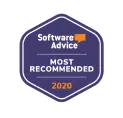Today’s business world is evolving almost faster than we can see. Follow this steps to hire the right candidate!
Assembling the right team isn't just part of success — it's the foundation. Yet the journey to find, attract, and hire the right candidate can often feel like navigating a labyrinth, filled with potential missteps and dead ends.
This guide will light the way, illuminating the five critical steps you need to refine your hiring process. From creating a laser-focused candidate scorecard to mastering the art of the interview, these actionable strategies will help you hire the kind of people who’ll drive revenue and revive your productivity.
Embrace these practices, and you'll not only attract top talent but secure the keystones of your company's success.
Create Your Candidate Scorecard
The cornerstone of any successful hiring process is the candidate scorecard — a tool that transforms your recruitment strategy from guesswork to precision. Start by meticulously listing the skills, experiences, and attributes that describe your ideal candidate.
This step demands introspection and foresight. What are the essential qualifications? What are the desirable yet non-essential traits? By differentiating between the must-haves and the nice-to-haves, you establish a clear, prioritized framework for evaluating applicants.
Yet your scorecard does more than guide your search. It also ensures that every candidate is measured against the same criteria, fostering a fair, unbiased selection process. Remember, the goal is to capture the essence of the role, creating a beacon that attracts candidates who not only align with the job’s requirements but also embody the potential to excel and grow within it — and within your organization.

Craft Compelling Job Postings
Once you've sculpted your candidate scorecard, the next step is to write job postings that speak directly to the heart of your ideal candidates. Leverage the scorecard to highlight the specific skills and qualities you're seeking, but don’t stop there. Transform your job description into a compelling narrative that showcases what makes your company a unique and desirable place to work.
Highlight opportunities for growth, the impact the candidate can have on the organization, and the culture they'll be a part of. This is your chance to stand out in a sea of generic listings. Use inclusive language to welcome a diverse range of applicants, and be transparent about the role’s challenges and rewards. A well-crafted job posting not only attracts candidates with the right skills, but those who align with your company's vision and values, ensuring a better fit for both.
See more on how to write a job posting that attracts top talent in our article.

Structure Your Interviews for Success
The interview is a critical touchpoint in the hiring process — a moment where art and science converge to reveal the potential within each candidate. To harness it effectively, structure your interviews around a core set of questions that reflect the criteria outlined in your candidate scorecard.
Your interview questions should dig into past achievements, problem-solving abilities, and situational responses, providing a clear picture of the candidate's capabilities and approach to work. Consistency is key. Apply the same structured framework to each interview to ensure fairness and objectivity, allowing for a direct comparison between candidates.
Incorporate behavioral questions to uncover how a candidate has handled situations in the past, as these patterns are likely to predict future performance. Remember, a successful interview is a dialogue — a chance to build rapport and see if there's a mutual fit. By meticulously planning your interview strategy, you'll be better equipped to identify candidates who aren’t just capable, but who will also thrive within your organization's unique ecosystem.
Learn more in our short guide to perfecting the interview process.

Use Assessments to Uncover True Potential
As you move deeper into the hiring process, comprehensive assessments are invaluable tools for uncovering a candidate's true potential. Beyond the resume and the interview, assessments are an all-too-often missing hiring step that can measure aptitude, behavior, and cultural fit.
Start by selecting assessments that align with the competencies and qualities identified on your candidate scorecard. From cognitive ability tests to personality assessments and skill-based evaluations, each type of assessment provides unique insights into a candidate’s suitability for the role.
It’s crucial that you use these tools as part of a broader, holistic evaluation process rather than standalone decision-makers. Assessments can highlight a candidate's strengths and areas for development, offering a fuller picture of their potential to contribute to your team. Spend some time integrating these tools thoughtfully into your hiring process to respect the candidate's time and experience, reinforcing your organization's commitment to making informed, respectful hiring decisions.

Check References the Right Way
Reference checks, often relegated to a formality in the hiring process, are in fact a goldmine of insights about your potential hires. But too many hiring teams botch them! Please, please avoid letting the employee choose their references, and instead ask for past direct supervisors. Then, engage with them by asking focused, open-ended questions that correlate with the attributes and achievements highlighted in your candidate scorecard.
Ask about the candidate’s contributions, work ethic, and adaptability to changes and challenges. This stage is your opportunity to confirm the narratives shared during interviews and assessments, providing a three-dimensional view of the candidate’s professional demeanor and achievements.
It's also a chance to discern how they interact with team members and adapt to your company culture. Effective reference checks require diligence, respect for confidentiality, and an understanding of the subtleties in feedback. Done correctly, they can be the final piece of the puzzle, ensuring you make a hiring decision with the highest degree of confidence.
Conclusion
By meticulously following these five pivotal steps, you position your organization to attract, evaluate, and secure the right talent — the kind that not only meets the job's requirements but also enriches your company culture. From constructing a detailed candidate scorecard to crafting compelling job descriptions, conducting structured interviews, utilizing comprehensive assessments, and performing insightful reference checks, each step is crucial in its own right.
Together, they form a cohesive strategy that ensures your hiring process is both efficient and effective. Embrace these practices to transform your hiring into a strategic asset, ultimately driving your organization's success and growth.
See the full webinar here:














